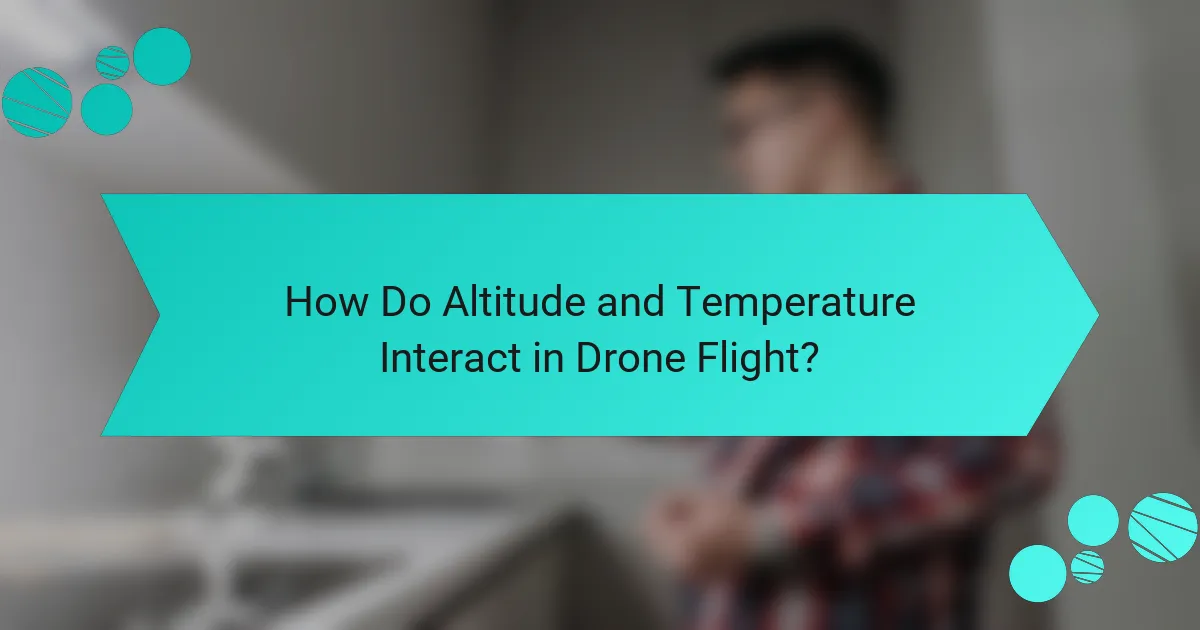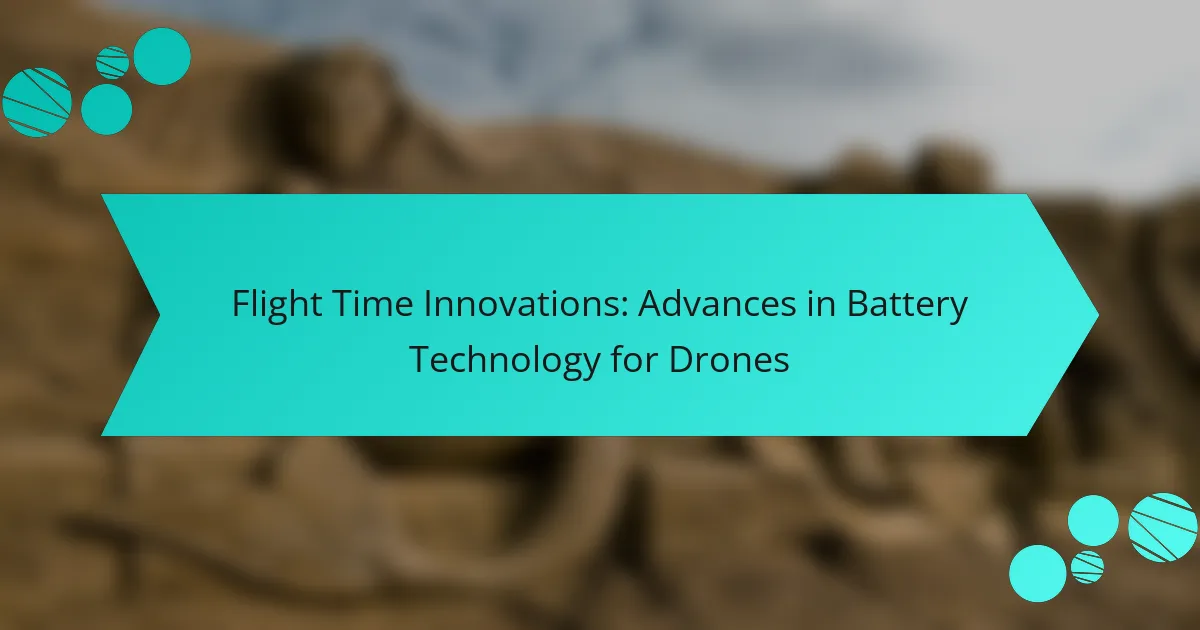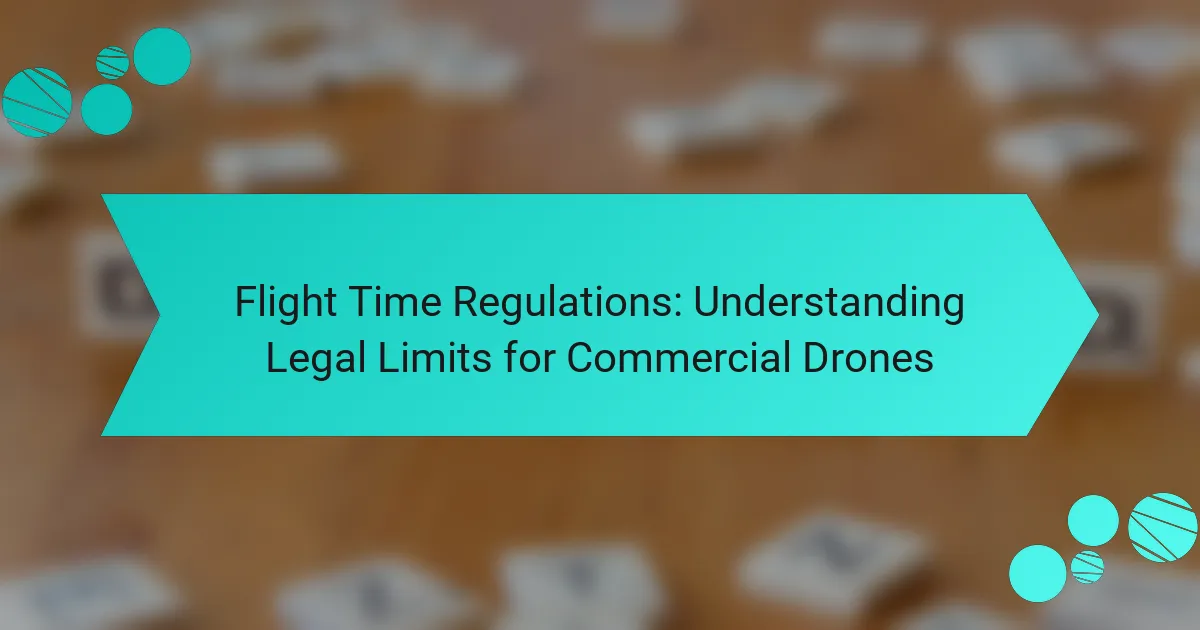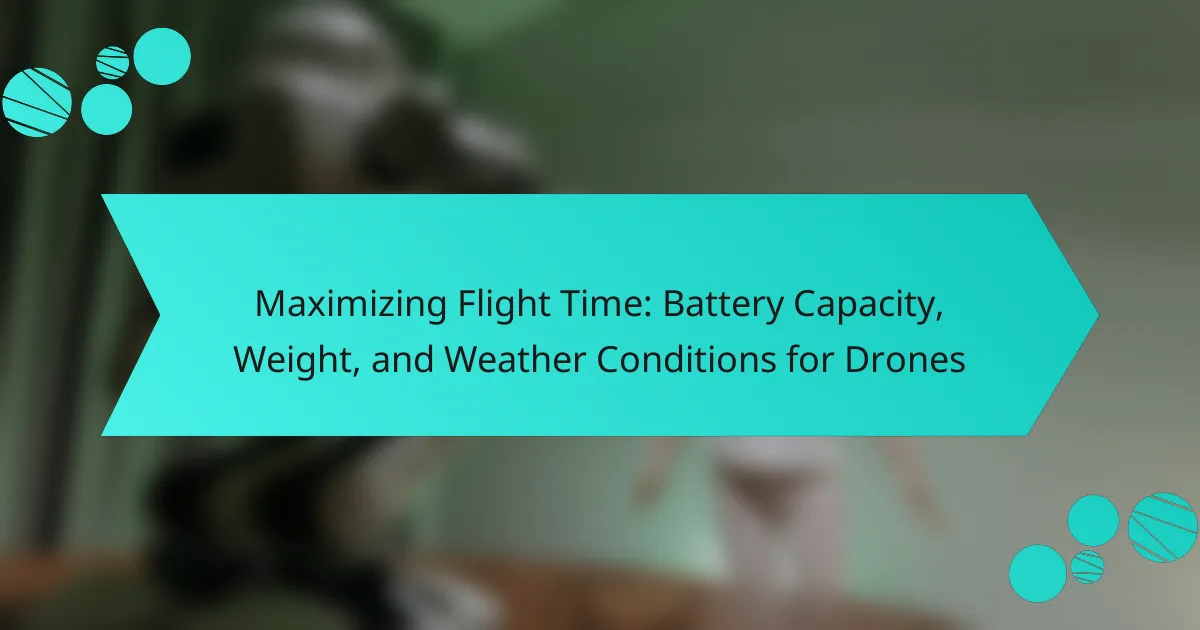
What Factors Influence Drone Flight Time?
Drone flight time is influenced by several key factors. Battery capacity is a primary determinant, as larger batteries provide longer flight durations. Weight also plays a crucial role; heavier drones consume more power and reduce flight time. Environmental conditions, such as temperature and wind, can significantly affect performance. For instance, colder temperatures can reduce battery efficiency, leading to shorter flight times. Altitude impacts air density, which can affect lift and energy consumption. Additionally, the type of drone and its design features, such as motor efficiency and aerodynamics, contribute to overall flight time.
How do altitude and temperature specifically affect drone performance?
Altitude and temperature significantly affect drone performance. At higher altitudes, air density decreases, which reduces lift. This can lead to shorter flight times and decreased maneuverability. Temperature influences battery efficiency and motor performance. Higher temperatures can cause batteries to overheat, reducing their capacity. Conversely, low temperatures can diminish battery performance and increase energy consumption. Studies show that drones may experience up to a 20% reduction in flight time at high altitudes combined with low temperatures. This highlights the critical need for pilots to consider environmental conditions when planning flights.
What is the relationship between altitude and drone battery efficiency?
The relationship between altitude and drone battery efficiency is significant. As altitude increases, air density decreases. This reduction in air density leads to less lift generated by the drone’s rotors. Consequently, the drone requires more power to maintain stable flight at higher altitudes. Increased power consumption results in reduced battery efficiency. Studies indicate that battery performance diminishes as altitude rises, particularly above 1,500 meters. At these heights, the drone may experience a notable decrease in flight time. Furthermore, temperature variations at different altitudes can compound these effects, further impacting battery life.
How does temperature impact the aerodynamics of drones?
Temperature significantly impacts the aerodynamics of drones. Higher temperatures reduce air density, which affects lift and thrust generation. As the air becomes less dense, drones require more power to maintain altitude. This increased power demand can reduce flight efficiency and battery life. Conversely, lower temperatures increase air density, enhancing lift and thrust. Enhanced lift allows drones to operate more efficiently in cooler conditions. Studies show that for every 10-degree Celsius increase, drone performance can decrease by approximately 5%. This relationship highlights the importance of temperature in optimizing drone flight performance.
Why is understanding these factors important for drone operators?
Understanding altitude and temperature is crucial for drone operators. These factors directly affect drone performance, including battery life and flight stability. For instance, higher altitudes can lead to reduced air density. This reduction impacts lift and can cause drones to consume more power. Similarly, temperature variations can influence battery efficiency. Batteries perform optimally within specific temperature ranges. Operating outside these ranges can lead to shorter flight times. Knowledge of these factors allows operators to plan flights effectively. This ensures safety and maximizes operational efficiency.
How can altitude and temperature knowledge improve flight planning?
Altitude and temperature knowledge can significantly enhance flight planning by optimizing drone performance. Understanding altitude helps in calculating air density, which affects lift and engine efficiency. Higher altitudes generally result in lower air density, requiring adjustments in flight parameters. Temperature influences air density as well; warmer air is less dense, impacting lift and battery performance.
For instance, a study by the National Aeronautics and Space Administration (NASA) indicates that drones may require longer flight times in warmer temperatures due to decreased lift capabilities. Additionally, temperature can affect battery efficiency; lithium-polymer batteries perform optimally within specific temperature ranges.
By incorporating altitude and temperature data, pilots can better predict flight duration and energy consumption. This knowledge allows for safer and more efficient flight operations.
What are the risks of ignoring altitude and temperature effects?
Ignoring altitude and temperature effects can lead to significant risks in drone performance. High altitudes reduce air density, affecting lift and propulsion. Increased temperatures can further decrease air density, compounding performance issues. These factors can result in reduced battery efficiency and shorter flight times. Drones may also struggle with stability and control, increasing the likelihood of crashes. Additionally, ignoring these effects can lead to equipment damage due to overheating or mechanical stress. Studies show that flying drones in adverse conditions can lead to operational failures, emphasizing the need for careful consideration of altitude and temperature.

How Do Altitude and Temperature Interact in Drone Flight?
Altitude and temperature significantly affect drone flight performance. As altitude increases, air density decreases. Lower air density results in reduced lift for the drone’s propellers. This can lead to decreased flight efficiency and increased power consumption. Temperature also plays a crucial role. Higher temperatures reduce air density further, compounding the effects of altitude. For instance, at 10,000 feet, the air density is about 30% lower than at sea level. This interaction can lead to shorter flight times and reduced payload capacity. Understanding these factors is essential for optimal drone operation in varying conditions.
What is the science behind altitude’s effect on drone lift?
Altitude affects drone lift due to changes in air density. As altitude increases, air density decreases. Lower air density results in fewer air molecules available for lift generation. Drones rely on rotor blades to create lift through the movement of air. With less dense air, the rotor blades produce less lift. This can lead to reduced performance and increased power consumption. Research indicates that at higher altitudes, drones may require more thrust to maintain the same altitude. Therefore, altitude significantly impacts drone lift efficiency and overall flight performance.
How does air density change with altitude and what does it mean for drones?
Air density decreases with altitude. As altitude increases, the air pressure and temperature drop, leading to lower air density. For drones, reduced air density means less lift is generated by the propellers. This can result in decreased flight performance and longer flight times. At higher altitudes, drones may require more power to maintain altitude. Additionally, the efficiency of the drone’s motors can be affected by lower air density. This phenomenon is critical for drone operators when planning flights in mountainous or elevated regions.
What are the implications of reduced lift on drone performance at high altitudes?
Reduced lift negatively impacts drone performance at high altitudes. As altitude increases, air density decreases, resulting in less lift generated by the drone’s propellers. This reduction in lift can lead to decreased flight stability and maneuverability. Drones may struggle to maintain altitude or climb efficiently. Consequently, flight times may shorten due to increased energy consumption. Additionally, payload capacity could be compromised, limiting the drone’s operational capabilities. Research indicates that performance drops significantly above 10,000 feet due to these factors. This highlights the importance of considering altitude when evaluating drone performance.
How does temperature variation influence drone battery life?
Temperature variation significantly influences drone battery life. High temperatures can lead to increased battery discharge rates. This results in shorter flight times. Conversely, low temperatures can cause battery capacity to decrease. In cold conditions, lithium polymer batteries may perform poorly. They can also suffer from reduced voltage output. Research indicates that optimal battery performance occurs between 20°C to 25°C. Outside this range, efficiency declines. For example, a study by the University of Maryland found that battery life can drop by up to 20% in extreme cold. Thus, maintaining a moderate temperature is crucial for maximizing drone battery efficiency.
What are the optimal temperature ranges for drone operation?
The optimal temperature range for drone operation is typically between 32°F (0°C) and 104°F (40°C). Within this range, most drones can perform efficiently and maintain battery life. Operating outside these temperatures can lead to decreased performance or potential damage. For instance, cold temperatures can reduce battery capacity, while excessive heat can cause overheating. Manufacturers often specify these ranges in user manuals to ensure safe and effective operation.
How does extreme cold or heat affect battery capacity and performance?
Extreme cold reduces battery capacity and performance significantly. At low temperatures, chemical reactions within the battery slow down. This results in decreased voltage output and reduced energy available for use. For example, lithium-ion batteries can lose up to 40% of their capacity at -20°C compared to room temperature.
Conversely, extreme heat can also negatively impact battery performance. High temperatures can accelerate chemical reactions, leading to increased self-discharge rates. This can cause overheating and potential damage to the battery. In some cases, excessive heat can reduce battery life by up to 50%.
Both extremes can affect the overall efficiency and reliability of batteries in drones. Thus, maintaining optimal temperature ranges is crucial for maximizing battery performance.

What Practical Considerations Should Drone Operators Keep in Mind?
Drone operators should keep in mind several practical considerations to ensure safe and efficient operations. First, they must understand the impact of altitude on flight performance. Higher altitudes can reduce drone lift due to thinner air. This can lead to shorter flight times and decreased maneuverability.
Next, temperature plays a crucial role in battery efficiency. Cold temperatures can reduce battery capacity, affecting flight duration. Operators should monitor battery levels closely, especially in low-temperature environments.
Additionally, weather conditions are vital. Wind speed and precipitation can significantly influence drone stability and control. Operators should avoid flying in adverse weather to maintain safety and performance.
Finally, understanding local regulations is essential. Compliance with laws regarding airspace and drone operation is necessary to avoid legal issues. Overall, these considerations help ensure effective and responsible drone usage.
How can drone operators adapt to varying altitude and temperature conditions?
Drone operators can adapt to varying altitude and temperature conditions by adjusting flight parameters and equipment settings. High altitudes reduce air density, which can affect lift. Operators should increase motor power to compensate for this loss. Temperature changes also impact battery performance. Cold temperatures can reduce battery efficiency, so operators should keep batteries warm before flight.
Additionally, using drones equipped with temperature sensors can help monitor conditions in real-time. Adjusting flight speed and altitude can optimize performance based on current weather conditions. For example, flying at lower altitudes may improve lift in cooler temperatures. These adaptations help maintain drone performance and ensure safe operation in diverse environments.
What pre-flight checks should be conducted based on altitude and temperature?
Pre-flight checks based on altitude and temperature include assessing battery performance, propeller condition, and flight controller settings. At higher altitudes, battery efficiency decreases due to lower air density. This can lead to reduced flight time. Temperature also affects battery capacity; colder temperatures can diminish performance.
Pilots should check the battery voltage and ensure it meets the required specifications for the planned flight. Propellers must be inspected for damage, as altitude can impact lift efficiency. Additionally, adjusting flight controller parameters may be necessary to optimize performance under varying conditions.
Monitoring weather conditions is crucial. High temperatures can lead to overheating, while low temperatures can cause mechanical failures. These checks ensure safe and efficient operation of the drone.
How can flight plans be adjusted for optimal performance in different conditions?
Flight plans can be adjusted by considering altitude, temperature, and weather conditions. Higher altitudes can reduce air density, impacting lift and engine performance. Adjusting flight paths to lower altitudes can enhance performance in such conditions. Temperature affects battery efficiency and motor performance. Warmer temperatures may decrease battery life, so planning for cooler times can optimize drone performance. Additionally, incorporating real-time weather data allows for dynamic adjustments. This ensures that the flight plan remains efficient and safe throughout the journey.
What are the best practices for maintaining drone performance in challenging environments?
To maintain drone performance in challenging environments, operators should follow several best practices. First, regular maintenance is essential. This includes checking battery health and ensuring propellers are undamaged. Second, calibrating the drone before each flight helps ensure accurate performance. Third, using the correct firmware updates optimizes functionality. Fourth, operators should monitor weather conditions closely. High winds and extreme temperatures can significantly impact flight stability and battery life. Fifth, adjusting flight paths to avoid obstacles and turbulence enhances safety. Lastly, conducting pre-flight checks ensures all systems are functioning properly. These practices can lead to improved performance and reliability in demanding conditions.
How can operators ensure battery efficiency in extreme temperatures?
Operators can ensure battery efficiency in extreme temperatures by implementing temperature management strategies. These strategies include insulating batteries to maintain optimal temperature ranges. Additionally, operators should monitor battery temperature regularly using thermal sensors. Using batteries designed for extreme conditions can also enhance performance. Charging batteries at recommended temperatures is crucial for efficiency. Furthermore, preconditioning batteries before use can prevent performance drops. Regular maintenance and checks can identify potential issues early. Following these practices can significantly improve battery efficiency in challenging environments.
What tips can help maximize flight time at high altitudes?
To maximize flight time at high altitudes, ensure optimal battery management. Use high-capacity batteries designed for cold temperatures. Cold air reduces battery efficiency, so pre-warm batteries before flight. Monitor weight carefully; excess weight decreases flight time. Utilize efficient flight patterns to minimize energy consumption. Avoid aggressive maneuvers, as they require more power. Maintain proper drone maintenance, ensuring all components function optimally. Lastly, fly during favorable weather conditions to reduce wind resistance. These practices enhance drone performance and extend flight duration in high-altitude settings.
The main entity of this article is drone performance, specifically focusing on how altitude and temperature influence flight time. Key factors affecting drone flight time include battery capacity, weight, environmental conditions, and design features. The article outlines the relationship between altitude and air density, explaining how these elements impact lift and battery efficiency. Additionally, it addresses the implications of temperature variations on battery performance and overall drone operation, emphasizing the importance of understanding these factors for effective flight planning and safety. Practical considerations for drone operators are also discussed, providing insights into optimizing performance in varying conditions.



